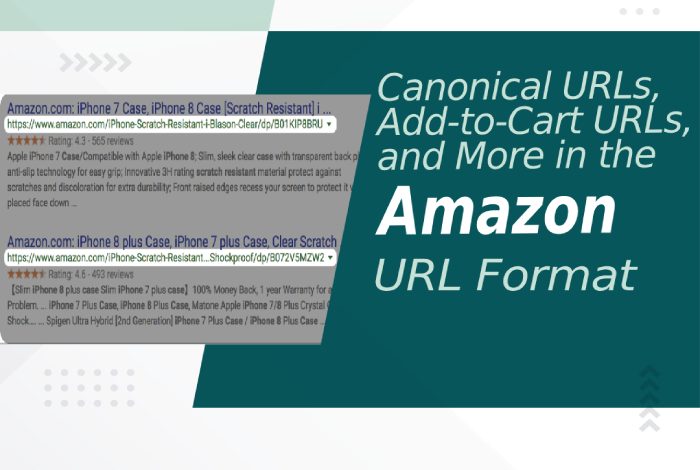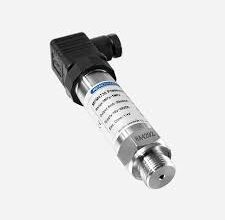Canonical URLs, Add-to-Cart URLs, and More in the Amazon URL Format

Your ability to drive outside traffic to your listing with the aid of distinctive Amazon Canonical URLs can significantly improve your product rankings on Amazon.
For instance, URLs mentioned in social media posts or advertisements can direct customers to your products, increasing the likelihood that they will find your product and eventually make a purchase.
Additionally, the higher your product ranks on Amazon, the more sales you make. This impressive Amazon ranking is thought to be the result of genuine product searches that used certain keywords. As a result, Amazon provides you with more chances to sell your products using different widgets and elevates the listings on search engines.
What Is A Canonical Amazon URL?
A canonical URL is a direct link to a product’s detail page that uses hyphens to separate keywords that Amazon appears to have randomly selected from the product’s title. This is commonly referred to as the URL slug in the world of SEO.
The Canonical URL is organized as follows:
https://www.amazon.com/words-from-the-products-title/dp/ASIN
The Amazon Echo’s canonical URL is as follows:
This URL is not canonical:
https://www.amazon.com/dp/ASIN
You can either visit a product’s page through a search result, or you can use the developer tools in your browser to look at the page elements: Use Command + F (or Control + F for PC users) to search for “canonical,” then copy the resultant Canonical URL. On a related note, we have observed differences between the canonical URL that appears in the address bar and the canonical that appears in the page’s code, which is the only reason I mention inspecting the page elements. The inline canonical, in our opinion, is the “real” canonical.
Using Keywords in Your Amazon Canonical URL to Your Advantage
SEO on Google
The URL of the Amazon product that Google indexes for search results is known as the canonical URL. You can see the URLs they are indexing by searching for “iphone scratch resistant case amazon”.
This screenshot shows how Google has highlighted the search terms that are contained in the canonical URL of the product. We’ve done our fair share of Google SEO, and one aspect of an Amazon product listing that is prime for leveraging ranking is the Canonical URL!
Amazon ranking
Unfortunately, we are unable to say for sure whether or not the keywords contained in a listing’s canonical URL affect keyword rankings on Amazon. There have been rumors that it does, but there is no proof of that. It is, however, extremely challenging to make a confident determination.
The fact that the same keywords are also present in the title, which has a significant impact on keyword ranking, makes it difficult to accurately attribute keyword ranking to the content in the canonical. It is nearly impossible to determine where the keyword ranking attribution comes from.
There are various ways to link your store to Amazon URLs in order to display your products and open up new sales channels. You could make Amazon canonical URLs, for example. However, there are many other things you can do to improve your Amazon product rank. This guide will show you how to optimize your Amazon business by utilizing various Amazon URL structures.
1. Canonical URLs
To help search engines find your product, Amazon creates canonical URLs. You can get indexed by changing this URL, which raises the visibility and ranking of your product. Additionally, you must rank highly there because different search engines account for 25% of all traffic to Amazon.com.
You must carefully define the first five keywords because canonical URLs place hyphens and colons right after the first five words in your title. You can choose where to place hyphens and colons, and they can be used interchangeably.
Once you have the five keywords and the product ASIN, you can create an Amazon URL for your product using a tool like Helium 10’s GEMS.
2. URLs for Add To Cart
Such URLs take customers directly to Amazon’s “Add to Cart” page, as the name implies. The products can also be added to the customer’s shopping cart using a URL that mimics Alexa.
When Alexa is triggered, a customer searching for an item sees your product as the top result.
The GEMS tool from Helium 10 makes it simple to create an Add to Cart URL. The ASIN and the quantity of your product are all you need. Additionally, when customers are given the URL, your product is automatically added to their shopping cart.
3. URLs That Are Frequently Used Together
The various widgets on the website, such as “often bought together” and “frequently brought together” cards, account for more than 35% of all Amazon sales. A product that is listed in these categories sells more.
According to amazon marketing services agency in USA, In most cases, sellers must either combine two of their own products or connect one of their rivals’ products with their own. Then, they use social media to drive Amazon through a particular URL by utilizing traffic.
Commonly Used Together The number of paired products and a specific set of characters serve to define URLs.
4. Two-Step Brand URLs
The two-step brand URL limits products by brand and keyword and instead targets keywords that are clearly related to your product. Additionally, it directs customers to a page with just your brand’s products.
Delivery of Amazon packages
Frequently Asked Questions on Amazon
What precisely are Amazon URLs, and how can they help sellers?
In essence, Amazon URLs are distinctive slugs that are part of the entire URL for your product. These URLs are used by Amazon to focus the keywords that customers enter when looking for products. These URLs can be changed by sellers to point outside traffic to the product page.
Your sales can increase significantly if you comprehend these Amazon URLs and know when and how to use them.
What is the best tool for creating Amazon URLs?
The GEMS tool from Helium 10 is a fantastic Amazon URL generator that handles everything for you. It can generate an Amazon URL for you that guarantees your product listings receive the desired traffic with just a few details like the ASIN and the quantity of product.
A Conclusion
While using effective keyword research techniques is crucial for achieving high rankings on Amazon, you shouldn’t discount the significance of the various Amazon URL types and their structure. Understanding when and how to use these URLs can significantly increase your sales.




